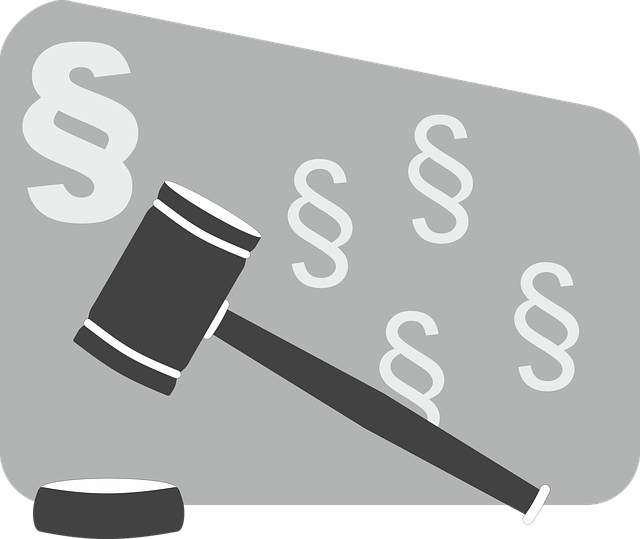RF Regulatory Agency investigations are crucial in upholding wireless communication laws and resolving disputes over RF devices. When property conflicts arise, understanding these processes is vital for businesses facing litigation. Settling such disputes through litigation combines technical knowledge of RF devices with legal expertise, ensuring successful defense outcomes. This structured approach, with a proven track record, not only recovers properties but also sets legal precedents. Initiated by non-compliance or signal interference, regulatory actions prevent legal issues and maintain critical communication networks. Strategically preparing for these investigations, including meticulous document review and compelling evidence, increases success rates, especially in white-collar cases. Engaging a specialized attorney is key to navigating this process and achieving favorable outcomes, including winning challenging defense verdicts.
“RF Regulatory Agency investigations are crucial processes ensuring radiofrequency (RF) technologies comply with safety standards. This article delves into the intricate world of these inquiries, exploring their impact on resolving property disputes through litigation. We analyze common triggers for agency probes and offer valuable insights for navigating this complex landscape. Understanding these investigations is key to effectively managing RF-related legal matters, especially when settling property conflicts, ensuring compliance, and minimizing delays.”
- Understanding RF Regulatory Agency Investigations
- The Role of Litigation in Settling Property Disputes
- Common Causes for RF Regulatory Agency Probes
- Navigating the Process: Tips for Effective Dispute Resolution
Understanding RF Regulatory Agency Investigations
RF Regulatory Agency Investigations are crucial processes designed to ensure compliance with wireless communication laws and regulations. These investigations often arise from suspected violations involving radio frequency (RF) devices, such as those used in telecommunications, broadcasting, and consumer electronics. When disputes arise over the use or ownership of RF-related properties, understanding these investigations is key for respective businesses.
Settling property disputes through litigation can be a complex process, especially when dealing with technical regulations. A strong winning challenging defense verdict depends on meticulous legal strategies that factor in both the technical aspects of RF devices and the broader legal framework governing their use. While general criminal defense practices may seem applicable, specialized knowledge about RF regulatory agency procedures is often necessary to navigate these intricate cases effectively.
The Role of Litigation in Settling Property Disputes
In many cases, settling property disputes through litigation is a critical path to resolving complex issues between parties. This formal legal process involves presenting evidence, arguing points of law, and seeking adjudication from a court of competent jurisdiction. Litigation offers a structured framework for addressing disputes, ensuring that all aspects are thoroughly examined under the oversight of an impartial judge or jury.
Across the country, the unprecedented track record of successful property dispute resolutions through litigation underscores its effectiveness. This method not only facilitates the return of properties to their rightful owners but also establishes clear legal precedents for future cases. Moreover, the involvement of philanthropic and political communities in supporting fair and just litigation practices further enhances the integrity of the process, ensuring that all citizens have access to effective remedies for their property-related grievances.
Common Causes for RF Regulatory Agency Probes
RF Regulatory Agency investigations often arise from a variety of factors, each with its unique implications for businesses and individuals involved. One common cause is non-compliance with radio frequency (RF) standards, which can result from unintentional errors in design or manufacturing processes. These standards are crucial for ensuring the safe and efficient operation of RF devices, such as wireless communication equipment. Failing to meet these requirements can lead to probes by regulatory bodies, aiming to settle property disputes through litigation if necessary.
Another significant trigger is the potential for intentional interference with RF signals, which can be malicious or result from poorly designed systems. This is especially pertinent in an era where technology is increasingly integrated into daily life and across the country. Unprecedented track records of successful investigations highlight the regulatory agencies’ ability to identify and address these issues effectively, thereby avoiding indictment and ensuring the uninterrupted functioning of critical communication networks.
Navigating the Process: Tips for Effective Dispute Resolution
Navigating the complex landscape of RF Regulatory Agency investigations requires strategic preparation and a deep understanding of the process. When facing potential charges or disputes, settling property issues through litigation can be a viable option. Engaging in this route demands a meticulous approach to ensure the best possible outcome.
To enhance your chances of success, especially in cases involving white-collar and economic crimes, building a robust defense strategy is paramount. This involves meticulously reviewing all relevant documents, identifying potential loopholes or weaknesses in the regulator’s case, and preparing compelling evidence to support your position. A skilled white-collar defense attorney can guide you through this process, providing valuable insights into navigating regulatory investigations effectively. By employing well-crafted arguments and leveraging available legal avenues, it is possible to achieve favorable outcomes, including winning challenging defense verdicts.
RF Regulatory Agency investigations can be complex, but understanding the process and utilizing effective dispute resolution strategies are key to successfully navigating these challenges. By recognizing common causes of probes and adopting strategic tips for handling them, individuals and businesses can minimize regulatory risks. Additionally, exploring litigation as a means to settle property disputes offers a viable solution in certain cases, providing a structured approach to resolving conflicts with regulatory bodies. This comprehensive guide equips readers with valuable insights to face these investigations head-on and make informed decisions throughout the process.






